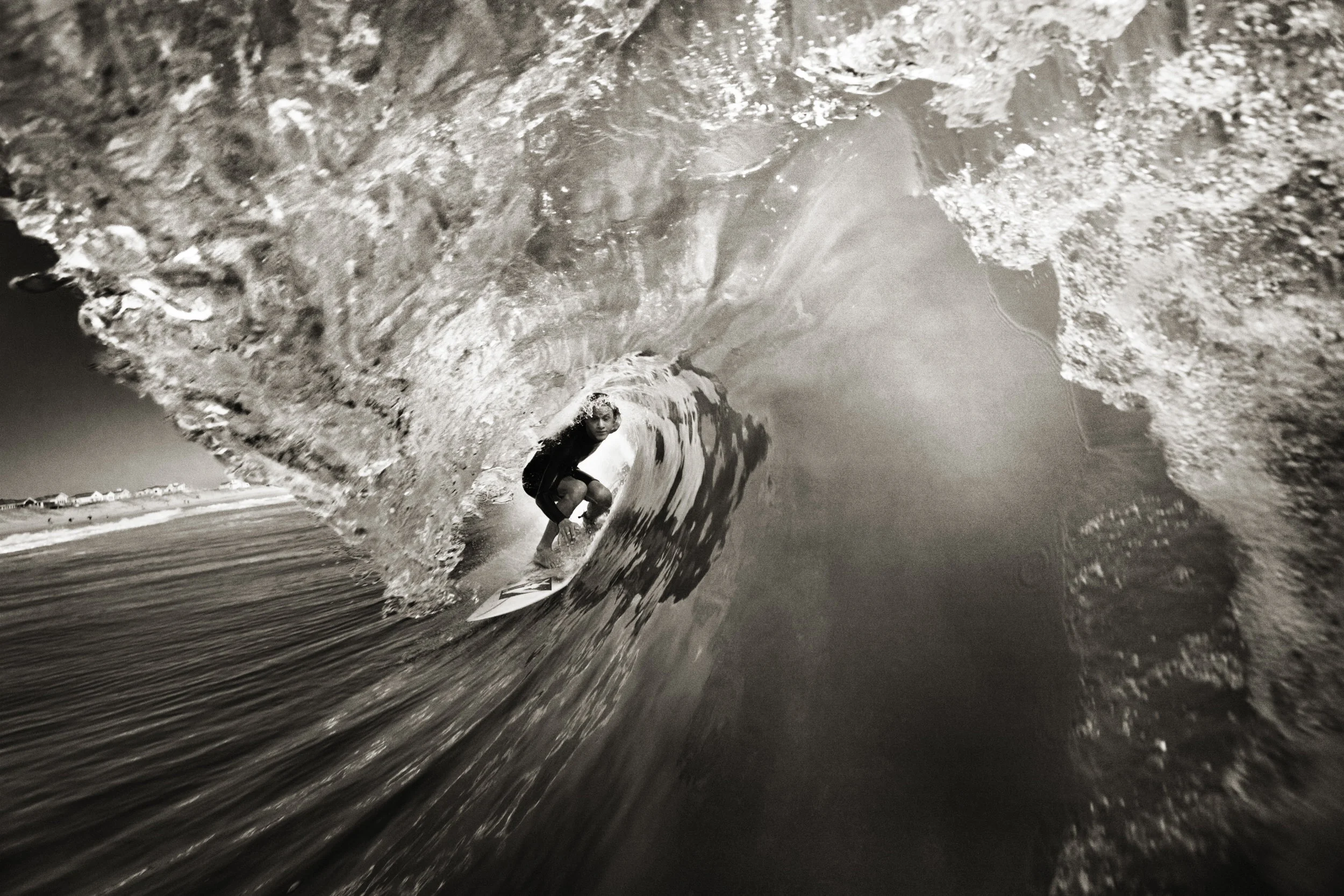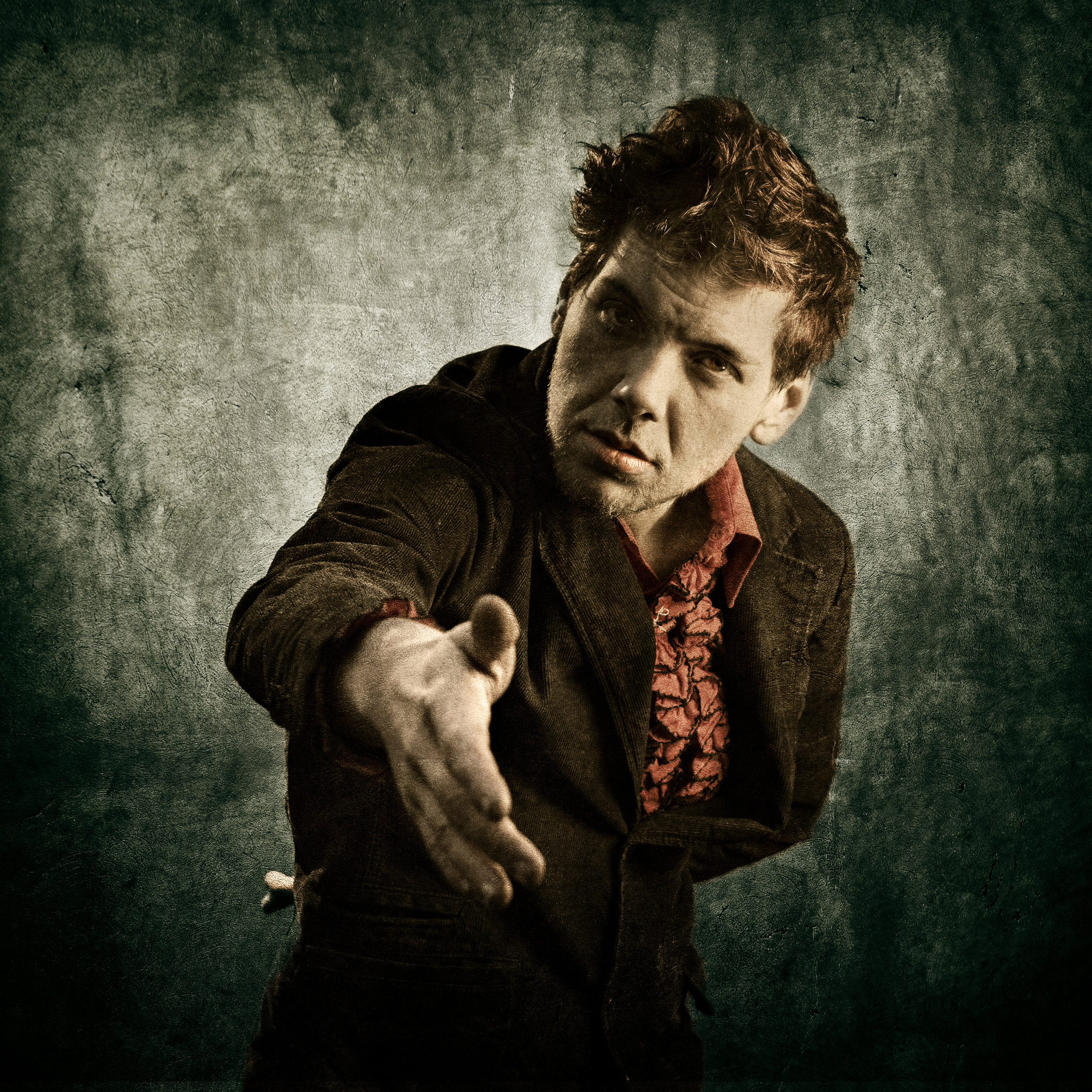THE (LOST) ART OF PRE-FOCUS
World-champion waterskier Thibault Dailland executing an ollie over my head.
(Originally published on National Geographic's "On Assignment" blog)
In today’s world, the old photojournalists’ adage “f/8 and be there” tends to concentrate on the second part of the phrase. “Be there” is a reminder that getting a great shot is not so much about equipment or settings or even composition, but about putting yourself into the heart of the action and capturing the decisive moment. But in today's world, the first part of the adage is a bit vestigial. Back in the day before auto-focus, you'd keep your aperture set at f/8 and your focal distance set at around 3 feet, and you could rely on most things in the image being at least identifiable, if not totally in focus. Nowadays, however, with fast autofocus and rapid-fire frame rates, all it takes is a nimble finger on the AF button to get a focus in milliseconds.
But pre-focusing is not an entirely lost art. One field of photography where it is still employed regularly is close-action watersports shooting, where the photographer is in the water with a waterproof camera. In order to capture a droplet-free frame, he or she keeps the camera submerged until a second before the shot, then pulls the camera out of the water and shoots a burst of photos, generally without looking through the viewfinder. When the camera comes out of the water, the lens is dripping wet, and you have roughly one second before enough water drops away to get a clear shot, and another five to seven seconds before the thin film of water covering the entire lens beads up and your shot is ruined by water droplets. If you wait for your lens to get clear enough of water for the autofocus to get a reading, you will quite likely miss the shot. It’s not an easy way to shoot, and as any water shooter will tell you, it takes dozens of “almosts” to get one great shot.
For this trick ski shot of championship waterskier Thibaut Dailland at Swiss Waterski Resort in Clermont, Fla., autofocus was not a practical choice. I had about three seconds to get a clear shot, between when the water clears the lens and before it starts to bead up. And, because most waterproof housings do not have gears to adjust the focus ring or the focal length of the lens, both must be set manually before placing the camera in the housing. Thus, most water shooters will calculate the optimal focal distance and aperture based on the light, the lens they are using, and the shutter speed they need to get the best chance of capturing a sharp image.
You can calculate the focal range of any aperture/lens/focal length by using a depth-of-field chart; but nowadays, like everything else, there’s an app for that. I use IndieFilmGear’s Simple DOF but there are many similar apps that will do the same job.
Most action sports require a minimum shutter speed of 1/500 of a second or faster to freeze motion, and ideally much higher speeds like 1/1600 of a second; so depending on the light, your camera’s sensor, and your lens, you may need to fiddle with the aperture or your ISO to get the best setting. A good digital camera will shoot clean at fairly high ISOs, so use this to your advantage. In action sports, unless you are going for an artistic motion blur, there is no such thing as a shutter speed that is too high. Also keep in mind that the wider your camera angle, the greater your depth of field. So all of this is much easier the wider you go.
After that, you’re ready to take the plunge. All you have to do now, is be there. Which, as any close-action photographer will tell you, is the hardest part.
(NB: The settings for the above shot were an aperture of f/13, a lens angle of 35 mm on an APS sensor, a shutter speed of 1/640 and an ISO of 640. The focal distance was pre-set at 5 feet. I also had a polarizer on the lens to heighten contrast and accentuate the blue sky, which brought down the light sensitivity about 1 stop. There is a very slight amount of motion blur in the picture which I could have corrected with a higher shutter speed and perhaps a more precise DOF setting, but part of the “be there” philosophy is that capturing the moment is more important than absolute sharpness. That’s my excuse, anyway.)











